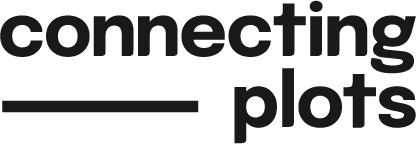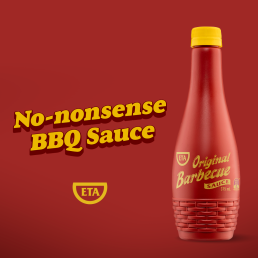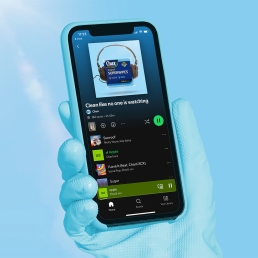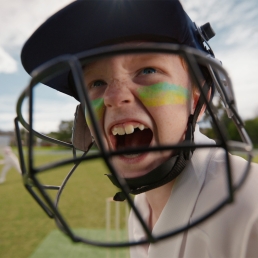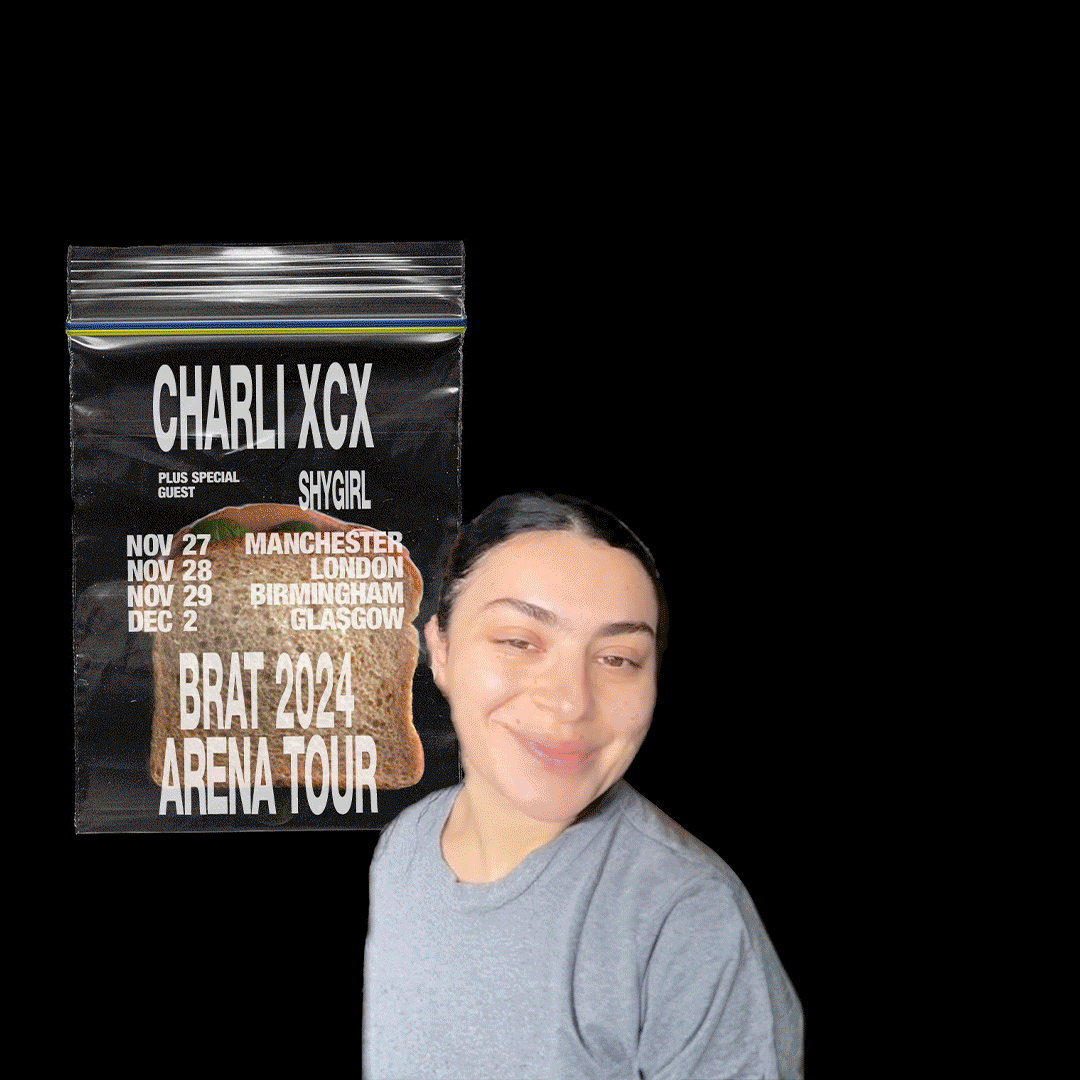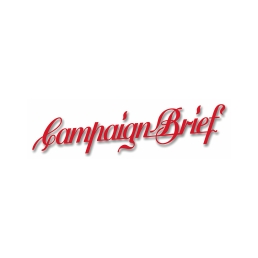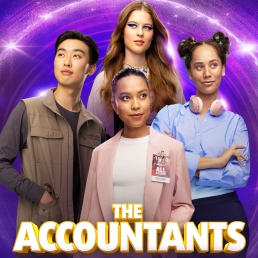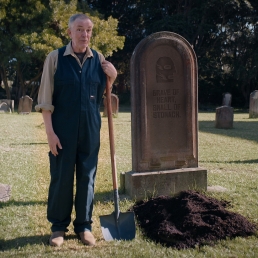Iconic Aussie BBQ Sauce ETA Gets Back To Its No-Nonsense Roots Via Connecting Plots
At a time when the cultural wheel is once again resetting and nostalgia for simpler times is back in fashion, BBQ sauce brand ETA is capitalising on this trend. With strong nostalgic associations with childhood barbecues, ETA is an Aussie staple, perfect for whatever’s cooking – be it the perfect sausage sambo, or steak and store-bought pasta salad or a burger with the lot.
The new brand platform, ‘No-Nonsense BBQ Sauce’ positions ETA as the iconic, old-school bottle of Aussie simplicity – an unapologetic statement against the overly complicated food culture and a beacon of light for a return to simpler things.
“For the past 10 plus years, hipster artisans and their whiskey infused, boujee craft condiments have dominated the food scene. But Australia was built on a foundation of three meat and veg and it was time to get back to basics.”
Connecting Plots Creative Partner, Matt Geersen
“This is the first small step in giving this iconic brand the focus it deserves. There’s a huge loyalty in Aussie culture for the brand and product and we feel we owe it to them to be true to who we are.”
Goodman Fielder CMO, Christine Fung
The campaign launched into retail, OOH channels and Reddit (the internet’s spiritual home of BBQ sauce enthusiasts) to galvanise the community that have been long awaiting the return of the cult Aussie favourite.
View the full campaign here →
Chux Partners With Spotify To Put The Feel-Good Vibes Back Into Cleaning Via Connecting Plots
When we listen to music, our brains trigger the release of dopamine. According to a survey commissioned by Jelmar in 2019, research shows that listening to music is not only pleasurable but also makes everyday tasks (like cleaning) more enjoyable.
That’s why cleaning playlists are the MVP of Spotify. A quick search of “Cleaning Playlists” on Spotify and you’ll realise how incredibly popular they are. With hundreds or thousands of playlists dedicated to music to clean to, these playlists see a notable surge in streaming, especially during spring and summer periods.
So Chux, alongside #cleantok Influencer Brit Cunningham, have curated the ultimate summer cleaning playlist – ‘Clean Like No One Is Watching’ on Spotify, supported by advertising, contextual media placements and influencer content to road test it and encourage communities to contribute to the playlist.
“Chux products have always been thoughtfully designed to get the job done. Adding some music to set the mood, we are hoping to inject a little joy and positivity to keep people upbeat and motivated. The new year is the right time to do this as it’s where routines are set for the year ahead.”
Clorox Marketing Director, Lee Everson
“We’re not saying cleaning is fun. That would be a lie. But that doesn’t mean we can’t associate cleaning with a bit of playfulness and fun. Music is the universal shortcut to just that.”
Connecting Plots Co-Founder, Dave Jansen
With the Spotify branded playlist launching on 20 January 2025, the campaign will roll out across Spotify ads, Meta, Digital OOH and influencers throughout the summer period.
View the full campaign here →
Connecting Plots Appoints Kate Sheppard As Managing Director
Sheppard, who joined at the beginning of January, brings with her 20 years of executive leadership experience working within the DDB network, where she acted as a senior client leader for brands including McDonald’s, Wrigley, Arnott’s, Virgin Australia, Unilever, PepsiCo, and J&J.
Within that time Sheppard also served as Director of Group Operations as well as Group Managing Partner, leading a bespoke integrated agency team of over 30 people dedicated to the J&J account.
In the newly created role of Managing Director, Sheppard will be instrumental in driving the agency’s next phase of growth, leveraging her expertise to deepen client relationships, inspire high-performing teams, and strengthen the agency’s integrated offering while focusing on recent client wins including Goodman Fielder, Chartered Accountants and Clorox.
Connecting Plots’ service offering now includes advertising, content, brand, social, influencer and earned media under one roof. As the company grows and evolves, Sheppard’s proven ability to operationalise an integrated offering under a cohesive vision will be invaluable for clients looking to grow their brands in innovative and impactful ways.
Kate has a proven ability of providing steady leadership and supporting and growing the businesses of her clients. Having someone like Kate who can ‘connect the plots’ of our evolved offering to bring the best possible solutions to our clients will be pivotal in this next phase for our company. I’ve heard nothing but glowing reviews from anyone who has worked with Kate and am excited to work alongside her in 2025 and beyond.
Connecting Plots Co-Founder & CEO, Tom Phillips
The Connecting Plots team have a relentless focus on craft, culture and client success – they genuinely give a damn about delivering work that works, no matter how big or small. I’m looking forward to taking a hands-on role in shaping the next chapter of the agency’s ongoing growth trajectory.
Connecting Plots Managing Director, Kate Sheppard
Sheppard will join the agency’s leadership team alongside owners, Tom Phillips, David Jansen and Sophia Kang; Creative Partners, Matt Geersen and John Gault; Strategy Partner, Craig Page; and Creative Operations Director, Mary Morrell.
Iconic Aussie Brand, Praise Gets A Renovation From Connecting Plots
Praise, an iconic and nostalgic brand in Aussie culture, made famous by its memorable jingle from the 80’s and 90’s, has launched a new brand platform, taking the brand back to its roots.
The brand’s advertising from previous decades reveals its lighthearted approach to convenience in the kitchen, made distinctive by a jingle that remains in the minds of many Australians 30 years later.
A new call to arms – ‘Give It Some Mayo’ solidifies Praise’s rightful claim as the category leader and takes the brand back to its origins, by celebrating all the great Aussie things made even better by ‘giving it some mayo’.
“There are some things in life that just get better when you ‘give it some mayo’. The outside of a grilled cheese jaffle for added crunch, your scrambled eggs for extra creaminess, even in your baking to add richness and moisture. But it’s not just food – think stories, cricket, netball, singing, beatboxing, piano, inventions, darts, dancing, bottle flip challenges, made-up games, and even applying makeup. The list goes on. The platform has legs, and this campaign is the first chapter in a new, fun-loving era for Praise.”
Goodman Fielder CMO, Christine Fung.
The brand campaign is the first major work for Praise by Connecting Plots, who were appointed in June 2023, launching Praise’s sustainability partnership with Saveful.
“Being handed the keys to a brand like Praise is a big honour. We have a small window in time to do something that we hope people will genuinely love and remember for decades to come. Praise is the category leader, so we’re acting like it and taking the fight to our competitors by focusing on mayo as that’s our foundation.”
Praise Marketing Manager, Tim Smith.
Connecting Plots and Goodman Fielder used insights from System 1 Testing to future-proof the brand with a younger audience. While the brand remains highly recognisable and memorable to older Australians, it’s relatively unknown to younger generations. This work aims to change that by owning and embedding an already popular Aussie saying and connecting it back to the benefits of Praise.
“I think the term ‘renovate’ is spot on. This project has been about getting the brand back to its roots. There’s a simplicity to our approach. We all agreed early on that we’re just mayo… we’re just dressings… our role in people’s lives is really simple. We make stuff taste better, quickly. So we decided to have some fun with that and forget about trying to be overly meaningful to consumers.”
Connecting Plots Co-Founder & CCO, Dave Jansen
The campaign has launched across TV, BVOD, social, OOH and podcasts in collaboration with media agency, Initiative to establish the new platform and repeatability of the line “give it some mayo”.
View the full campaign here →
Helga’s Brings A Taste Of Late Night Wholesome To The Brats
Since the release of Charli XCX’s studio album, Brat, the brat trend and lime green brat aesthetic has been seemingly everywhere – from TikTok dances, memes and fashion through to an endorsement by the U.S presidential candidate Kamala Harris.
When Charli XCX’s tour poster was banned by the UK’s advertising regulation body, ASA, for “promoting bad things”, the singer-songwriter promptly took to TikTok to clarify, immediately adding a sandwich to the updated tour poster.
With the humble sandwich now central to the Brat 2024 Arena Tour’s promotional material, it was only fitting for a brat sandwich to take centre stage.
“We wanted to create something bratty, but also a little bit wholesome. Something that could bring our brats together for a moment of goodness amidst a big night out.”
Helga’s Marketing Manager, Ryan Guthrie.
So, to show the brats they care, Helga’s partnered with It’s Recess, a cult sandwich shop just off of Sydney’s Oxford Street to develop a custom brat club sandwich for one night only.
Named after one of the iconic tracks on Charli’s new album, the Club Classic[s] is a play on the iconic club sandwich. 11 layers of pure bratty chaos held together by three slices of deliciously soft Helga’s wholemeal bread. Ingredients include crispy bacon, oxheart tomatoes, rocket, chicken, swiss cheese, apple slices brined in pickle juice and a bright brat-green mayo. All served in a custom sandwich bag, of course.
Influencers, content creators and media were invited to an exclusive invite-only preview night to taste test the sandwich and create content for their channels to get word to the brats.
The experience dropped on Friday 6 September where It’s Recess transformed into the iconic brat lime green. For one night only from 10pm – 1am, 365 (another Charli XCX song) Club Classic sandwiches were available and free. You just had to turn up to get your hands on one. And if you missed it – sandwich creator – Tom Smallwood created a tutorial on how to make a Helga’s Club Classic at home.
The campaign was developed by Goodman Fielder in collaboration with Connecting Plots and their social and influencer business unit, a.glo.
“From our team identifying the opportunity, to having an idea and activation in motion with Connecting Plots just 48 hours later – this just demonstrates the power of a close working relationship between agency and client.”
Goodman Fielder’s CMO, Christine Fung.
View the full campaign here →
Connecting Plots Has 4 Entries Accepted Into Campaign Brief The Work 2024
Film & TV Craft – Special Effects
‘Happy To Help’ – Westinghouse
Radio & Audio
Let’s Clean Things Up’ – 30 SECONDS
Film, TV & Cinema (90 Seconds & Under)
‘The Experts in Air’ – Mitsubishi Heavy Industries Air-Conditioners Australia
Film, TV & Cinema (90 Seconds & Under)
‘Take A Breakation’ – Muffin Break
Chartered Accountants ANZ And Connecting Plots Challenge Perceptions Of The Profession
The accounting profession has a problem. Consideration of the profession is severely lacking in the younger generation, while perceptions are deeply rooted in old truths that no longer apply. To put it quite simply, Gen Z don’t see accounting as ‘cool’.
Despite the importance of accountants in our economy, these preconceived notions have become a significant barrier for students when it comes to making decisions about their future careers. Student enrolments in accounting degrees at universities have almost halved since 2018, leaving a massive gap in the profession’s talent pipeline.
Despite the decline in consideration, overall demand for accounting, audit and finance professionals is predicted to grow significantly, with forecasts showing that we will need an additional 58,000 new jobs in the next 10 years to match demand. Chartered Accountants ANZ, who support the education, development and professional standards of more than 139,000 financial professionals across Australia and New Zealand, need to future-proof the profession by challenging Gen Z’s perceptions of accounting.
As part of a longer-term platform to bring about change for the profession, Chartered Accountants ANZ has partnered with creative agency, Connecting Plots to develop a creative platform and strategic approach that will span future communications, content and campaigns.
“This is a marathon, not a sprint. From launching partnerships with Year13, YES and Explore Careers to establishing this new platform, we are still in the early stages of a much longer journey to change perceptions and drive consideration of a career in accounting.”
Chartered Accountants ANZ Chief Marketing Officer, Chelsea Wymer.
Through qualitative research, Connecting Plots discovered that students don’t think a whole lot about their future profession, nor do they know (or care) much about accountancy. But they are incredibly passionate about their interests, which are wide and varied. The task at hand was to show them how a career in accounting could help turn these passions into their career.
After all, behind every superstar athlete, every brand we love and every show we binge watch, there’s a financial expert. They may not be in the spotlight, but Chartered Accountants are the backbone of some of the most exciting industries across the globe. The new platform ‘Make Epic Things Happen’ shines a spotlight on these unsung heroes, repositioning accountants as the stars of the show by featuring them in an epic movie trailer.
“From out in the field to festivals, from global conservation to gaming, the new campaign provides context for the real work of accountants that our audience can understand, relate to and aspire to become. We wanted to inspire the next generation to see that people in accounting make epic things happen every day.”
Connecting Plots Creative Partner, Matt Geersen.
The new work launched in cinema in July 2024 before one of the year’s most anticipated film premieres, Deadpool & Wolverine. The film has already smashed box office records, grossing a staggering $438.3 million globally, including a record-breaking $17.6 million at the Australian box office in its first week.
The campaign will continue to roll out across careers events, online video, YouTube, Meta, Instagram and TikTok, OOH and targeted display media over the coming months.
View the full campaign here →
La Famiglia Unveils New Brand Platform, Positioning Garlic Bread As An Irresistible Indulgence Via Connecting Plots
A quick search for ‘garlic bread’ on Reddit reveals the internet’s unwavering fascination with this delicious treat – crispy on the outside, soft and buttery on the inside, garlic bread is truly the eighth wonder of the modern world.
However, despite the widespread love for garlic bread, particularly their own, which took out top honours in the Sydney Morning Herald’s ‘Great Australian Supermarket Garlic Bread Taste Test’ in 2021, La Famiglia has not seen this translate into growth.
Research indicates that consumers don’t see garlic bread as a necessity and tend to only consider garlic bread as a pairing for Italian cuisine. This association is only exacerbated by La Famiglia’s Italian name and branding.
The new brand platform, ‘To Die For’ aims to establish a unique position in consumers’ minds beyond the typical Italian associations, elevating La Famiglia garlic bread from non-essential to irresistible by owning the extreme lengths people will go to for a taste of it.
“We know people love our garlic bread, there’s an almost cult-like obsession with it. The challenge we’re facing is lack of top-of-mind awareness and being seen as more than just a side to Italian food. Moving away from this is a critical step in growing our portfolio – showing that it’s a must have regardless of the occasion and cuisine.”
Goodman Fielder Head of Portfolio, Rose Milan.
To launch this new positioning, independent agency Connecting Plots has introduced a mascot willing to risk their life for a taste of Australia’s favourite garlic bread.
“Everyone loves La Famiglia garlic bread. Even those who probably shouldn’t, like our vampire. He’s a playful representation of just how irresistible the allure of our product is and a unique new angle for La Famiglia that is distinctly, un-Italian. We look forward to doing more with him in the future and building out the brand platform.”
Connecting Plots Creative Partner, Matt Geersen.
View the full campaign here →
Changi Airport Group Launches Campaign To Drive ANZ Visitation In First Work By Connecting Plots
For ANZ travelers, the tyranny of distance means that outside of the obligatory boarding pass instagram post at the airport, there’s little joy to be found until we reach our final destination. Unless of course, you happen to be traveling via one of the best airports in the world. With seemingly limitless experiences, the award-winning Singapore Changi Airport offers the chance to start the holiday early.
The new campaign celebrates the wealth of activities and experiences available across Changi’s four terminals and Jewel, its multi-dimensional entertainment and retail complex. From swimming pools to a mirror maze to robots serving the latest whisky, it is so much more than just an airport. It’s ‘a departure from ordinary.’
“We’ve been incredibly excited to bring this campaign to life. The work really captures the breadth of extraordinary experiences available that make Changi Airport more than your standard transit airport, but one that becomes part of the holiday experience itself.”
Changi Airport Group Vice President of Corporate & Marketing Communications, Kelvin Ng.
“Changi Airport really is a departure from ordinary. Being able to enjoy such a wide range of incredible experiences while breaking up your journey is an enticing proposition for travelers from Australia and New Zealand.”
Connecting Plots Creative Partner, Matt Geersen.
The new work is the first to come out of independent creative agency, Connecting Plots since it was officially appointed as ANZ creative agency of record in August 2023 following a competitive pitch.
View the full campaign here →
Mad Mex Give Away Burial Plot To Combat Permanent Food Comas Via Connecting Plots
Not for the faint of heart, the cult-classic is back by popular demand, returning for its 14th year for a limited 6 week period until 21 July. During that time, the iconic double-sized burrito will come with a free can of Liquid Death, promising to murder both your hunger and your thirst.
Anyone daring enough to take on the challenge will go in the running to win a grand prize to die for – their own personal plot of land in a cemetery. Entrants just need to purchase a Big Burrito combo, go to the website and write the inscription for their own tombstone in 25 words or less to go into the running to win their very own burial plot.
The campaign uses popular content creators @lach_mac and @jonbernardk to deliver eulogies for friends and family who tackled the combo, while the ever-popular satirical institution, The Betoota Advocate is publishing bespoke content to give the combo mass appeal.
“While Aussie property prices soar and cost of living grows more expensive than ever, the cost of dying just got that little bit easier. Partnering with killer brands like Mad Mex and Liquid Death gives us the creative freedom to push boundaries for greater ROI – we’ve had a lot of fun bringing this to life across creative, influencers and content partners.”
Connecting Plots Creative Partner, John Gault.
The campaign aims to drive foot traffic and sales during the limited period, while also starting the brand on its journey to bring the “Mad’ back into Mad Mex.
“The Big Burrito is a staple of our marketing calendar. We were excited to step things up this year and partner with the team at Liquid Death to really embrace the food coma that is more or less guaranteed when you down a 1kg burrito with a 500ml tallboy. Kudos to Connecting Plots for bringing the madness and developing a campaign that’s made us all a little uncomfortable – in a good way.”
Mad Mex General Manager of Marketing, Nick Cook.
The campaign is rolling out across social, digital, POS and owned channels, as well as across PR, influencers and content partnerships.
View the full campaign here →
